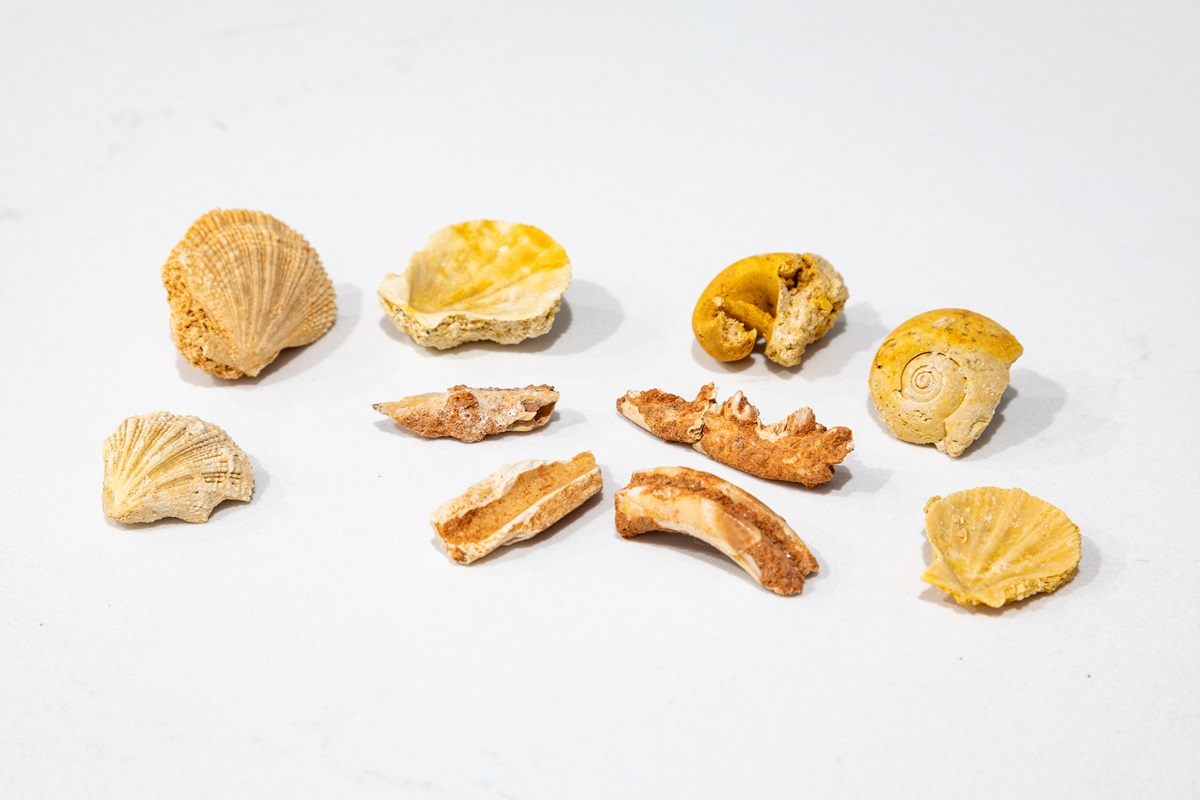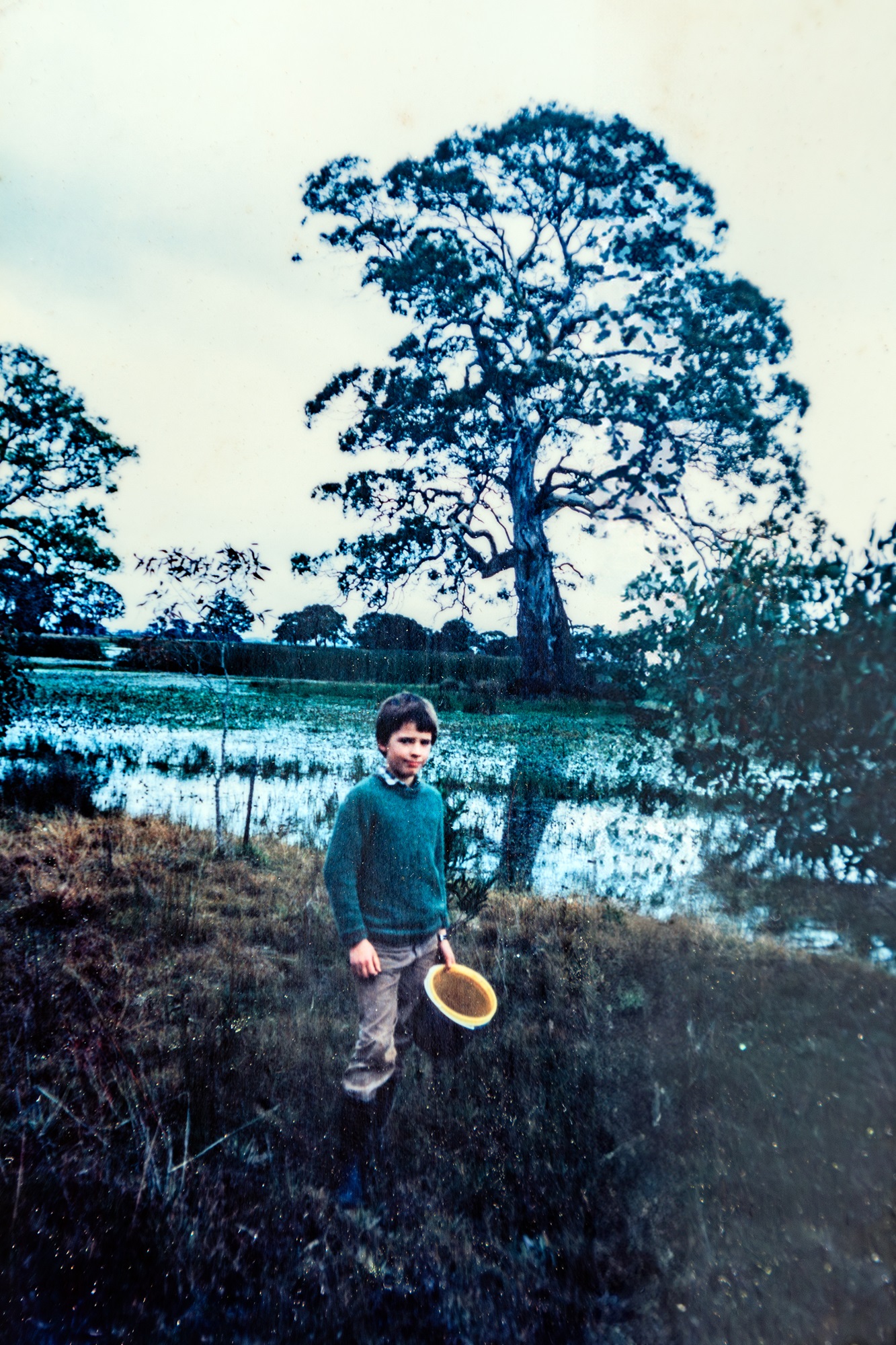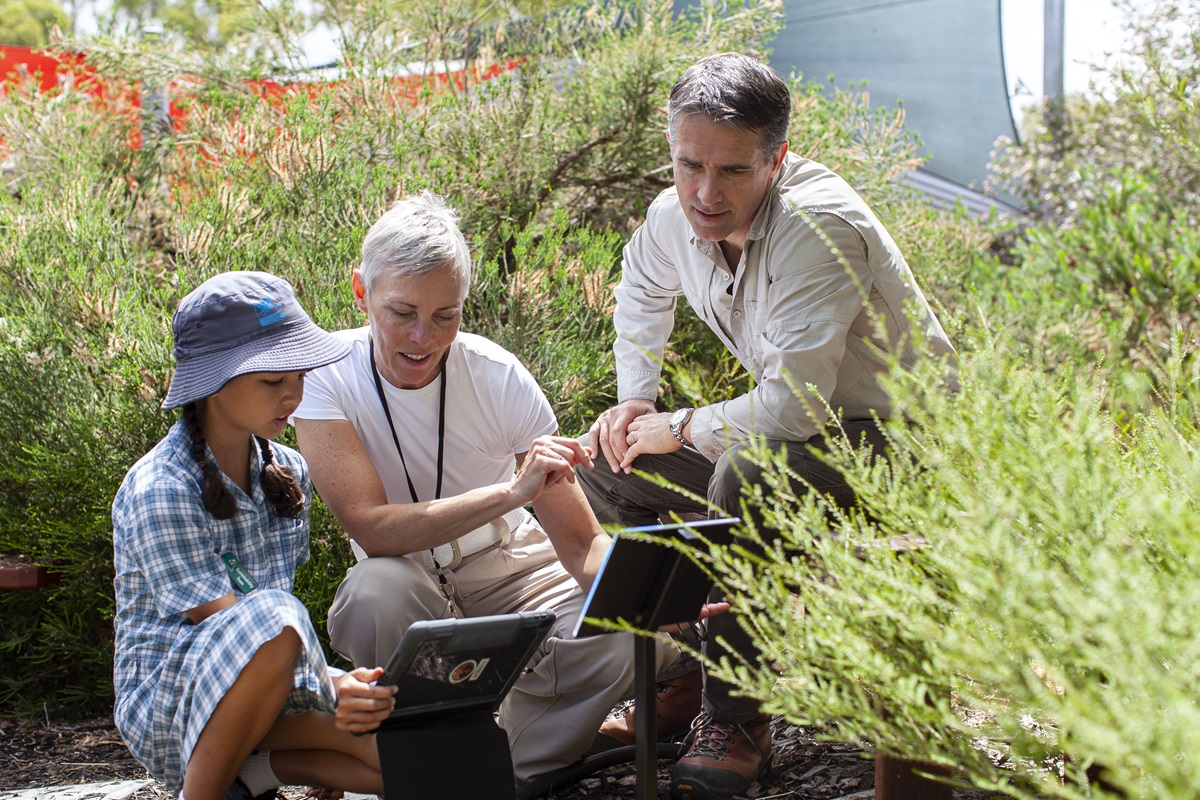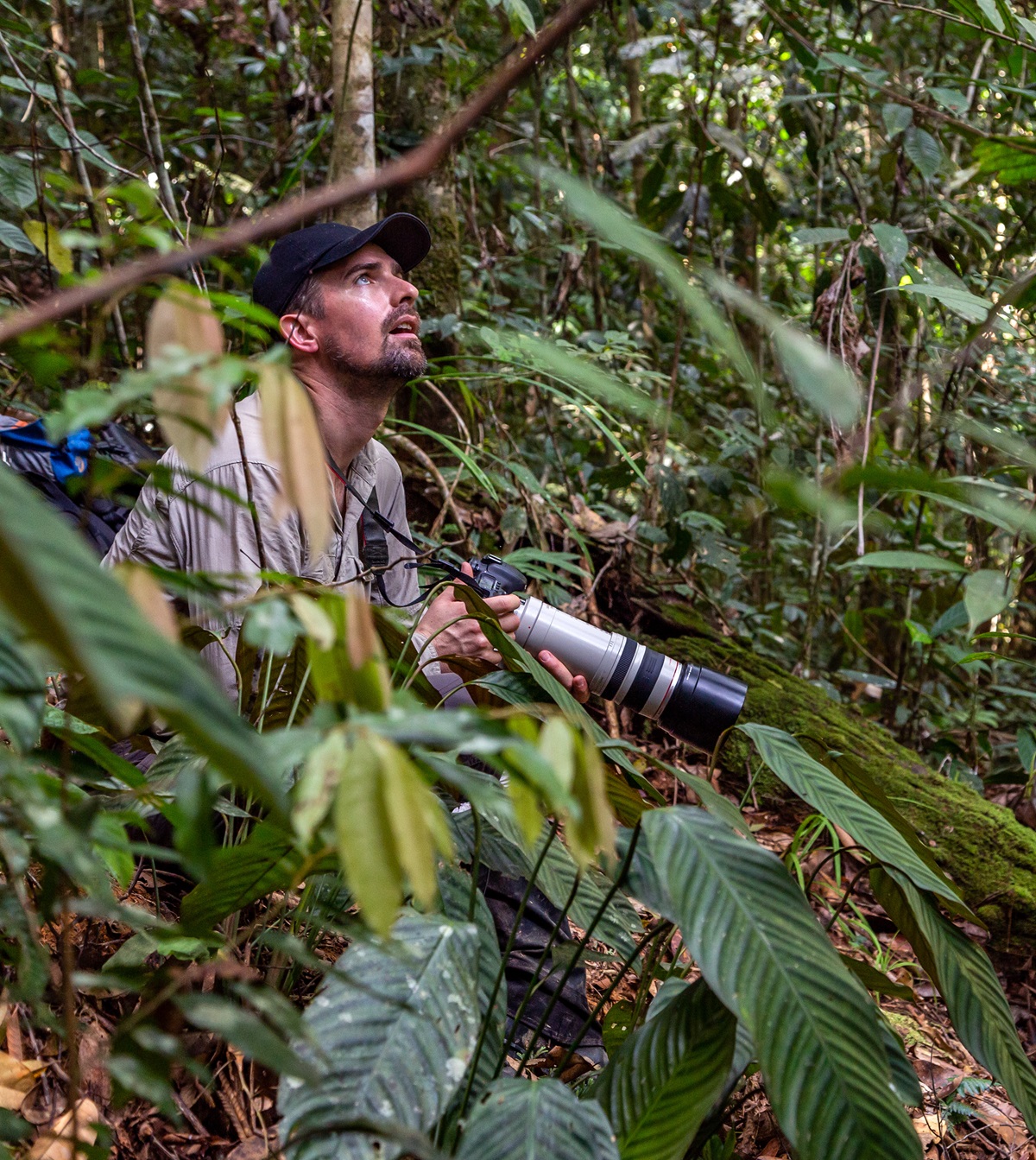The year was 1983 and Bruce Webber was in grade two. He was walking across a paddock, near his school in Victoria, when he uncovered a seven-million-year-old tooth.
It came from a broad-tooth white shark, Isurus hastalis, which lived from the Miocene to the Pleistocene period.
Bruce and his classmates were on a school science excursion, scrambling along the banks of a mostly dried up creek line. The morning adventure was in a paddock on a local farm in western Victoria, close to Hamilton College where Bruce attended school.
Young Bruce had crawled into a tiny, pitch-black cave to see if he could find any interesting rocks. Scrambling around in the dark, he found one with an unusual shape and texture.
Later that year, the National Museum of Victoria confirmed what he had really found.
Incredibly, this was not Bruce’s only remarkable discovery during primary school. In grade five, during a school camp to Naracoorte, students were given prospecting hammers and allowed to roam a limestone quarry.
This time Bruce found a fossilised wombat tooth, a fragment of a Thylacoleo (marsupial lion) jawbone, and a pile of fossilised shells.

A selection of fossils Bruce Webber found as a child
© Bruce Webber / CSIRO
“I grew up with my boots in the mud and my head amongst the leaves. If I wasn't watching David Attenborough documentaries, I was out chasing critters,” Bruce said.
One special teacher sparks lifetime of curiosity
Bruce’s discoveries were not simply due to luck. They were enabled because the school children were given the opportunity to seek and to find.
“There was a teacher at the school who encouraged curiosity-led exploration and discovery,” Bruce said.
“Mrs Ann Scott was wonderfully adventurous, and her enthusiasm for learning was infectious. She was a fantastic influence on me and many other students.”
Ann served as Head of the Junior School for 17 years, before retiring in 1991.
She recalls how valuable it was to take students out of the classroom to participate in hands-on learning.
“Early in my career I got my bus license to the school [where I worked at the time] for a 33-seater,” Ann said.
“I had the freedom to take students to museums, universities, and into the field to explore. We would visit the Grampians to look at the rock formations, even if it snowed.
“For a time, I’d take students to Melbourne Zoo every month to make observations. It was my personal practice throughout my career and, wherever I was, to instruct my class to pause what they were doing, to be silent for 10 minutes, and to simply observe.”
Planting a seed for science
It was Ann who encouraged Bruce to channel his fascination for nature into a learning opportunity. She suggested observing the environment of a local frog pond and entering a science competition. He submitted his findings in the Science Talent Search run by the Science Teachers Association of Victoria.
This competition still runs today and is now in its 73rd year.
For Bruce’s submission he began by catching tadpoles at Freshwater Lake, near the Grampians (Gariwerd) National Park. He carefully relocated them to a dam, which he had dug with a pick and shovel, in his own backyard. Before long he had a great resident population of frogs to observe. His detailed records of their lifecycle and development across two years went on to win a prize.


Bruce, then and now.
Reaching new heights through a career in science
After school, Bruce studied botany and environmental science at the University of Melbourne. From there, he completed a doctorate on plant-animal interactions in the tropical rainforests of far north Queensland, and then Borneo.
His adventures in the research field began to multiply.
He has collected ant bodyguards from within tree branches, monitored crocodiles from a helicopter, sampled highly toxic trees full of cyanide, tracked cassowaries using remote cameras, and has discovered and named five plants and one insect new to science.
Bruce's documentation of these travels all over the world extended to a passion for photography to capture the diversity of nature that he encountered.
For the last 15 years, Dr Bruce Webber has been working as a global change ecologist at CSIRO, Australia’s national science agency. His work seeks to address the most important knowledge gaps to improve biodiversity conservation.
“My work aims to discover why species are where they are,” Bruce said.
“What are the factors that allow them to persist? Are these factors related to the local environment, or perhaps to interactions with other plants or animals? How will climate change influence these factors?
“We then use this knowledge to build resilience for rare and threatened species to keep them there, or to target vulnerabilities for non-native pests and weeds, so we can more effectively manage them where they are invading.”
Paying it forward, and leaving a legacy
Despite his busy career, Bruce never forgot the time invested in him by his teacher. For years now he has carved out the time in his own schedule to share his expertise with school students. He shows them what a career in science, technology, engineering and maths (STEM) has to offer, and just where it can take them. It’s part of STEM Professionals in Schools.
“I like to dispel the myth of the white lab coat image that people first think of when you say: I’m a scientist,” Bruce said.

Bruce Webber in the field in Cameroon with a chameleon on his arm. Credit: Celine Born.
“I used to do a skit for students where I’d don the many outfits that we see in science today – hard hats, wetsuits and all – to illustrate just how varied the job can be.
“I know it has had an impact, because I’ve been approached years later by a student who recognised me, who recalled the sketch and how it helped shape his own love for science.”
It’s a familiar sentiment for Bruce, who fully appreciates the impact his own teachers and influencers have had on his career and path through life
“A few years back, I wrote to David Attenborough to thank him for inspiring me into a nature/conservation focused career. He wrote back sharing with me details on his then-recent series on plants. Needless to say, this letter is a treasured possession!”
Partnering teachers with STEM professionals
In recent years Bruce has been partnered with a local school in Perth, Western Australia, through STEM Professionals in Schools.
The program partners researchers and STEM industry professionals with teachers to bring STEM learning to life in classrooms around the country. Recently celebrating 17 years in operation, the program maintains hundreds of invaluable partnerships just like Bruce’s.
His current partnership with Churchlands Primary School has included a full circle moment for Bruce. Together with the school, Bruce assisted with the creation of a frog pond on the school grounds for students to observe. Bruce helped the students to optimise the design and, now it is built, visits several times a year to assist the students in monitoring their thriving ecosystem.
No images found.
“It wasn't just about building the frog pond; it was about understanding how it comes together. It’s understanding that you can't just dig a hole and put a bit of plastic lining in there for frogs to turn up,” Bruce said.
“If you want frogs in the area, you need to consider: what do frogs need? And what do those things that frogs need, need? We built this pond ecosystem theoretically first by mapping that interaction web, and then we built it in their school.”
Hannah Reid, Bruce’s teacher partner, said work around the frog pond can be tied to key learning content in the Australian Curriculum across multiple school levels. The project covers subjects including biological science, science inquiry, technology, and maths.
“Our collaboration with Bruce has afforded us the knowledge and confidence to build a STEM learning program with authenticity and a level of engagement from students that is not possible through regular curriculum resources,” Hannah said.
“Having a scientist in the classroom, and being able to create new hands-on activities with his input, produces a great level of excitement for the kids, making the learning memorable as well as fun.
“The deeper understanding of STEM that it affords our students, particularly of biological sciences, has been invaluable.”

Bruce, a teacher, and a student observe the school frog pond
© Permission is required from CSIRO Australia’s National Science Agency to publish this image.
Bruce considers it an obvious priority for STEM professionals to actively support STEM education in schools and communities.
“Today’s primary schoolers will be the workforce delivering the solutions over the next few decades. They already have a natural curiosity for life and for the natural world,” Bruce said.
“Our job is to ignite their passion for a STEM career and to equip them with the knowledge they’ll need to achieve it.”
“To preserve our natural environments for future generations, we need two things: for kids to understand it and appreciate why it's worth saving, and to have the tools to save it,” Bruce said.
Get involved in National Science Week
Bruce commits to visiting a school during National Science Week. The 2024 theme is Species Survival: more than just sustainability. It’s a topic Bruce said is extremely meaningful in Australia. The intersection of climate change and non-native invasive species are having a profound impact on biodiversity in our country.
“It's not just about saving the koala or saving the tree. The best way to get good conservation outcomes for our biodiversity is to understand the interactions between species. These relationships, such as pollination, herbivory, seed dispersal and predation, are the glue that hold our ecosystems together,” Bruce said.
“But interactions are incredibly hard to document and understand. You can’t capture an interaction and keep it on display in a museum, which means it’s always going to be important to spend time in nature - observing, documenting.”

Bruce Webber in the rainforests of central Borneo with a long lens camera. Credit: Edward Tsen.
The study of these interactions and how they are evolving is complex.
Bruce is currently involved in studying this with our Ecosystem Change Ecology team. The team do this work at scale, utilising drones and new monitoring technologies to gather swathes of data for analysis of entire ecosystems. But Bruce said there is much that can be done on an individual level to help build resilience and healthy interactions in our local ecosystems.
Back where it all began
At the commencement of this school year, Bruce was invited to return to Hamilton College, to deliver the Scholar’s Address at the start of year school assembly. An esteemed alumnus, Bruce’s presentation on his career journey held a special meaning for the students who now walk the same halls he did more than 30 years ago.
As part of his return trip, Bruce revisited the lake where the frogging adventures of his childhood took place, which is still brimming with life. He also took the opportunity to visit a fond acquaintance.
Now 86-years-old, Ann was thrilled to welcome Bruce to her home to share a cup of tea and reflect on their time learning together. For Bruce, it was an honour.
“I will be forever grateful to Mrs Scott and the other people who went above and beyond to provide me with inspiration and opportunities for discovery in my early years,” Bruce said.

Bruce reunited with Mrs Ann Scott at her home in early 2024. Credit: Peter Scott.
“Our teachers should never underestimate their ability to have a profound, life-long influence on the students in their care – sometimes it just takes many decades for them to gratefully acknowledge this input! I hope that I can play even a small part in helping someone else on their journey of STEM discovery.”
Credits
-
Author
-
Production editor
-
Editor
Summer Goodwin
-
Developer
Kate Cochrane
-
Images
Bruce Webber and CSIRO Archives
